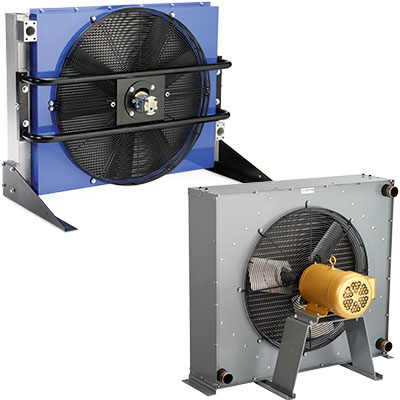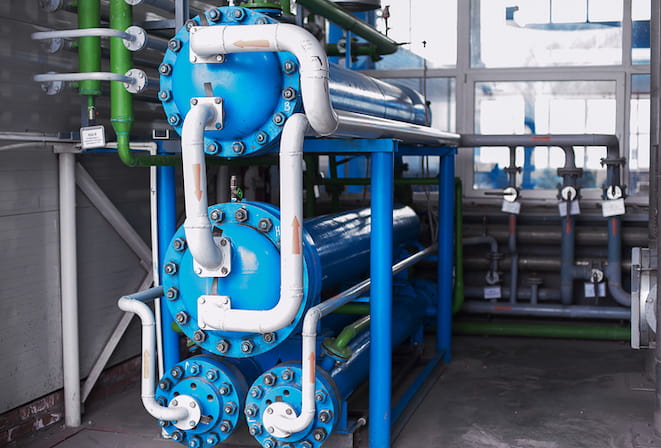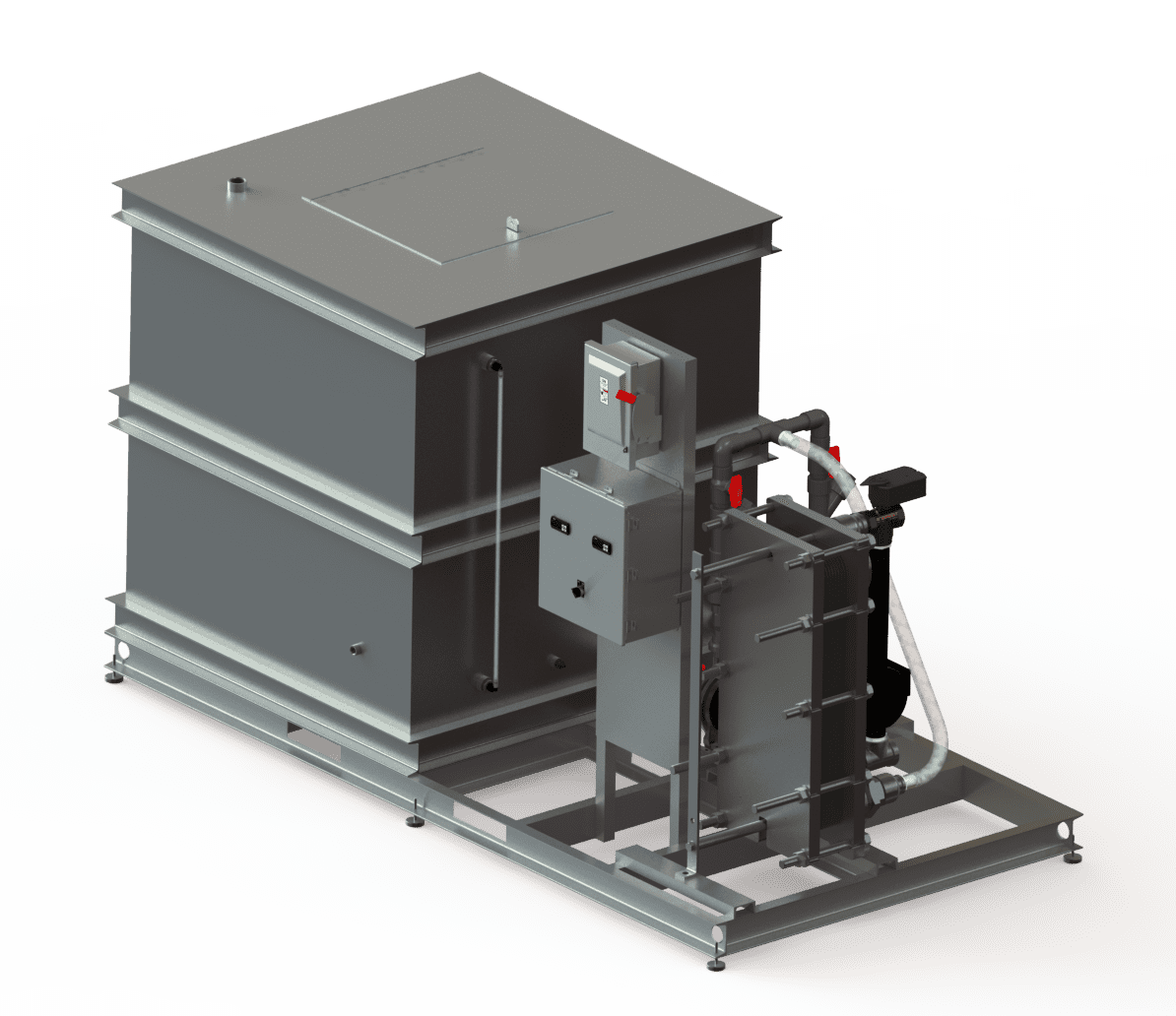Why Choose DVS Heat Transfer Systems for Compact Heat Exchanger Designs
Wiki Article
A Comprehensive Guide to Selecting the Right Heat Transfer Solutions for Your Needs
Picking the suitable Heat transfer system is necessary for functional effectiveness. Numerous systems deal with various requirements, affected by factors such as temperature range and liquid kind. Understanding the principles behind Heat transfer, such as transmission, convection, and radiation, is vital. In addition, assessing energy resources and upkeep practices can impact long-lasting performance. A closer evaluation of these considerations exposes just how to customize a system to particular demands. What should one prioritize in this facility decision-making process?Understanding Heat Transfer: Key Ideas and Principles
Although Heat transfer might appear like a simple idea, it includes a variety of concepts that are basic for reliable system style. Recognizing these principles is crucial for developers and designers who intend to optimize thermal performance in numerous applications. Conduction, as an example, involves the transfer of Heat via solid materials, while convection refers to the motion of Heat within fluids. Radiation, another crucial concept, explains exactly how Heat can be transferred via electromagnetic waves. Each of these devices plays an essential function in establishing how energy moves within a system. By thoroughly realizing these concepts, professionals can make enlightened choices, making certain that Heat transfer systems operate successfully and meet the certain demands of their applications
Kinds Of Heat Transfer Solutions: A Review
Understanding the concepts of Heat transfer lays the foundation for exploring the various kinds of Heat transfer systems readily available. Heat transfer systems can be categorized mainly into 3 types: convection, conduction, and radiation. Conduction includes Heat transfer via strong products, counting on direct contact in between particles. Convection, on the various other hand, happens in liquids (gases and fluids) where the motion of the fluid itself helps with Heat transfer. Radiation entails the transfer of Heat with electro-magnetic waves and does not need a medium, allowing it to take place in a vacuum. Each sort of system has unique qualities and applications, making it crucial for individuals and companies to very carefully evaluate their particular demands when choosing one of the most ideal Heat transfer solution.Applications of Heat Transfer Solutions in Numerous Industries
Heat transfer systems play an important duty throughout various markets, impacting efficiency and item quality. In commercial manufacturing procedures, they facilitate specific temperature level control, while in food and beverage processing, they assure security and preservation. Additionally, cooling and heating and climate control systems depend greatly on effective Heat transfer to keep comfy atmospheres.Industrial Production Processes

Numerous industrial production processes depend heavily on reliable Heat transfer systems to make the most of performance and enhance product high quality. In sectors such as metalworking, Heat exchangers play an essential function in preserving suitable temperature levels throughout welding, casting, and building. These systems assure uniform Heat distribution, which is important for accomplishing preferred product residential properties. In the chemical production sector, Heat transfer systems promote specific temperature control throughout responses, impacting return and security. In fabric production, reliable Heat administration is important for dyeing and ending up procedures, influencing shade uniformity and textile high quality. By selecting ideal Heat transfer technologies, makers can enhance power efficiency and reduce operational expenses, ultimately leading to a more sustainable and affordable production environment.
Food and Drink Processing
Effective Heat transfer systems are just as essential in the food and beverage handling industry, where preserving ideal temperature levels is essential for food safety and security and top quality. These systems play a crucial function in procedures such as food preparation, pasteurization, and sterilization, ensuring that products are risk-free for intake and keep their dietary value. Heat exchangers, for example, effectively transfer Heat between liquids, maximizing energy use while reducing temperature level variations. Additionally, refrigeration systems are essential for protecting disposable products and expanding rack life. The option of Heat transfer modern technology straight influences functional efficiency and product integrity, making it imperative for food and beverage makers to pick the appropriate systems tailored to their particular processing demands. This cautious choice inevitably adds to consumer complete satisfaction and food security.
Cooling And Heating and Climate Control
While many sectors count on Heat transfer systems for efficiency, HVAC (Heating, Air Flow, and A/c) plays a vital role in preserving indoor environment control across numerous setups. These systems use Heat transfer concepts to regulate temperature, air, and humidity quality, ensuring convenience and safety and security in domestic, industrial, and commercial atmospheres. Appropriately made heating and cooling systems boost power efficiency, reduce operational prices, and decrease ecological effect. In industrial buildings, for example, efficient environment control adds to employee productivity and customer contentment. In commercial applications, HVAC systems aid keep optimal conditions for tools procedure and item conservation. Picking the appropriate Heat transfer system is important for conference details environment control demands and achieving general system efficiency.Examining Energy Resources for Heat Transfer Solutions
In examining power resources for Heat transfer systems, a contrast of renewable resource options and fossil gas factors to consider is important. Renewable resources, such as solar and wind, deal sustainable options that can reduce ecological effect. Alternatively, nonrenewable fuel sources remain common due to their well-known infrastructure and energy density, prompting a mindful evaluation of both choices.Renewable Energy Options

Nonrenewable Fuel Source Considerations
Assessing nonrenewable fuel source factors to consider is essential for the efficiency and sustainability of Heat transfer systems. Nonrenewable fuel sources, such as gas, oil, and coal, are typical power resources that provide significant Heat result, making them preferred choices for residential and commercial applications. Nonetheless, their ecological impact, consisting of greenhouse gas discharges and source exhaustion, elevates worries. When choosing a warmth transfer system, it is crucial to analyze the schedule, expense, and regulatory factors related to these gas. Additionally, the performance of fossil gas why not try these out systems should be thought about, as higher efficiency can reduce some environmental disadvantages. Ultimately, a balanced method considering performance and sustainability can assist decision-makers towards the most suitable Heat transfer solution for their specific needs.Factors to Take Into Consideration When Choosing a Warm Transfer System
Picking a suitable Heat transfer system calls for mindful consideration of numerous aspects that can considerably affect efficiency and performance. One important element is the operating temperature level range, which determines the products and style appropriate for the application. In addition, the kind of liquid utilized in the system-- whether gas or liquid-- impacts Heat transfer efficiency and compatibility. The system's dimension and capacity should straighten with the particular requirements of the operation to avoid inadequacies. Power resource availability is likewise crucial, affecting operating expense and sustainability. The setup atmosphere, including area restrictions and ease of access for upkeep, plays a substantial function in system choice. Governing compliance and safety and security requirements must be considered to assure the system fulfills all legal needs.Upkeep and Efficiency Optimization for Heat Transfer Solutions
Keeping Heat transfer systems is important for making certain maximum performance and durability. Routine maintenance activities, such as cleansing Heat exchangers and checking insulation, help protect against performance losses as a result of fouling and thermal bridging. Furthermore, keeping an eye on system specifications, consisting of pressure and temperature level, permits for early discovery of abnormalities, reducing downtime and costly fixings. Carrying out a preventative upkeep timetable can enhance efficiency and expand the life expectancy of components. Upgrading to innovative control systems can improve functional performance by readjusting to varying problems and tons. By focusing on upkeep and efficiency optimization, drivers can achieve lowered power usage, lower operational prices, and boosted total system reliability, ultimately causing better resource utilization and a more lasting operation.Future Fads in Heat Transfer Technologies
As industries progressively prioritize sustainability and power performance, future patterns in Heat transfer modern technologies are established to undergo substantial improvements. Developments such as innovative products, consisting of carbon nanotubes and nanofluids, guarantee enhanced thermal conductivity and effectiveness. In addition, the combination of sustainable power sources right into Heat transfer systems is obtaining momentum, advertising environmentally see here now friendly remedies. Smart innovations, consisting of IoT sensing units, are expected to transform tracking and control, making it possible for real-time information analysis for maximized performance. The development of modular and portable systems will promote much easier installment and maintenance, catering to varied applications. These innovations indicate a shift towards more lasting, efficient, and adaptable Heat transfer services, straightening with global energy objectives and environmental standards.
Regularly Asked Questions
What Are the Ecological Influences of Heat Transfer Systems?
The ecological effects of Heat transfer systems can include greenhouse gas exhausts, power intake, and potential thermal contamination. Furthermore, check my source improper disposal of products and inadequacies can contribute to resource deficiency and ecological community interruption.How Do I Calculate the Cost-Effectiveness of a Warmth Transfer System?
To determine the cost-effectiveness of a heat transfer system, one need to examine preliminary expenses, operational expenditures, maintenance demands, and energy performance, contrasting these aspects against the anticipated life expectancy and performance of the system.Can Heat Transfer Solution Be Used in Residential Setups?
Heat transfer systems can undoubtedly be made use of in domestic settings. They supply reliable home heating and cooling remedies, making homes more comfortable while possibly reducing energy expenses. Their convenience allows for various applications in residential settings.What Security Rules Relate To Heat Transfer Solutions?
Security guidelines for Heat transfer systems typically consist of guidelines on procedure, setup, and maintenance. Conformity with neighborhood building regulations, producer specs, and industry requirements is important to assure safe and effective system efficiency in different applications.Exactly How Do Various Materials Affect Heat Transfer Efficiency?

Conduction, for circumstances, entails the transfer of Heat with solid products, while convection refers to the motion of Heat within liquids. Understanding the principles of Heat transfer lays the foundation for checking out the various kinds of Heat transfer systems offered. Heat exchangers, for instance, successfully move Heat in between fluids, enhancing power usage while minimizing temperature level fluctuations. In reviewing power sources for Heat transfer systems, a comparison of sustainable energy alternatives and fossil fuel considerations is important. Metals, such as copper and aluminum, conduct Heat effectively, whereas insulators like rubber and glass slow down Heat circulation.
Report this wiki page